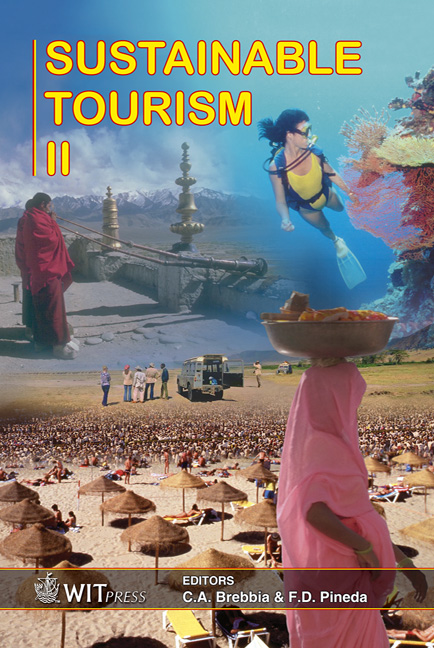Sustainable Tourism In Mountainous Regions
Price
Free (open access)
Transaction
Volume
97
Pages
11
Published
2006
Size
464 kb
Paper DOI
10.2495/ST060221
Copyright
WIT Press
Author(s)
K. Meyer-Cech & U. Pröbstl
Abstract
Trends of tourism in mountainous regions with their manifold economic, social and ecological impacts are dealt with in this paper using the Austrian Alps as an example, and evaluating ways to manage tourist activities and adapt to man-made and natural challenges in accordance with the concept of sustainable development. The first section of this paper deals with the differences in research on tourism trends in Europe and North America concerning approaches and methods used. Trends in Alpine tourism are discussed, such as developments of spatial concentration, socio-demographic changes and new developments in winter tourism. Then possible responses to these trends that will help contribute to a sustainable development of tourist activities in the Alps are illustrated, including regulations relating to spatial planning or nature conservation as well as the management of tourist destinations. Ways of enhancing tourist activities in economically weak areas are touched upon. Keywords: sustainable tourism, mountainous regions, tourism trends, Austria, Alps, spatial planning, nature conservation. 1 Introduction Tourism plays an important role in Austria. The Alps cover two thirds of the country and account for about 85% of the 118 Mio. overnight stays per year. Only a fraction of the Alpine area, namely less than 15%, can potentially be used for agricultural, settlement and tourist purposes. This narrow space fulfils multiple, often overlapping functions of ecology, living, economy and recreation, a great challenge for spatial planning. The Alps as well as other mountainous regions often are areas of great scenic beauty and high ecological value. At the same time they are habitat for humans and sites of economic production. Aside
Keywords
sustainable tourism, mountainous regions, tourism trends, Austria, Alps, spatial planning, nature conservation.





